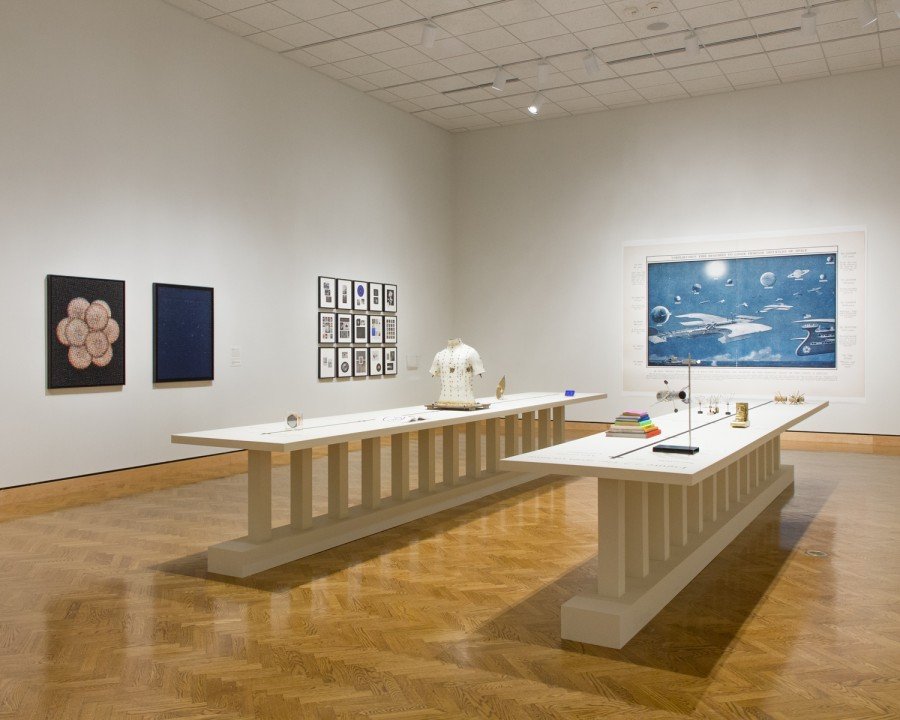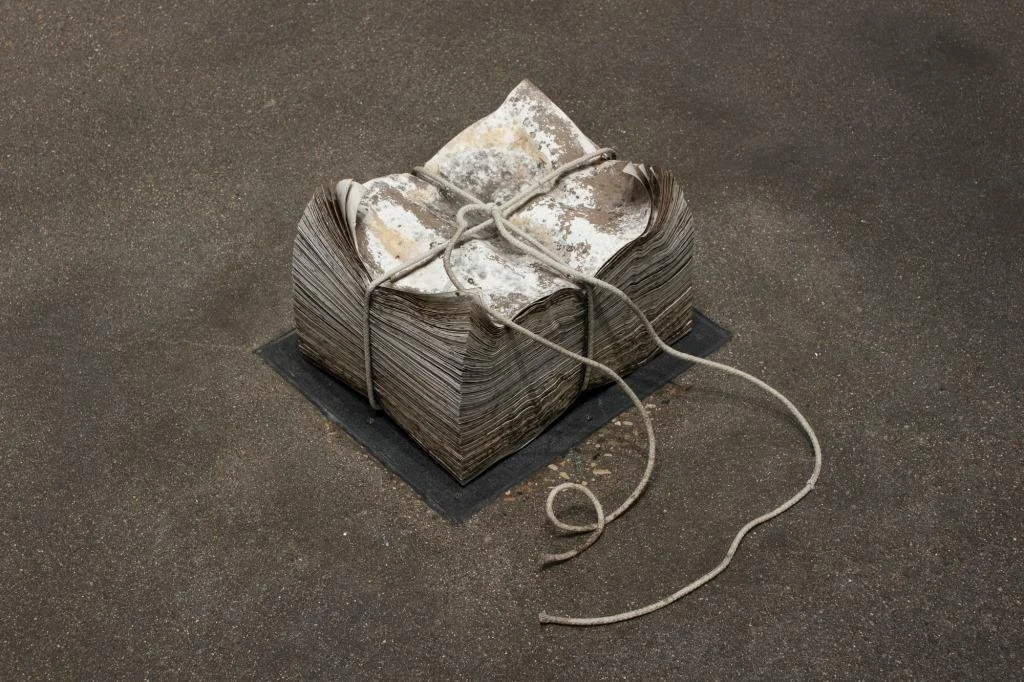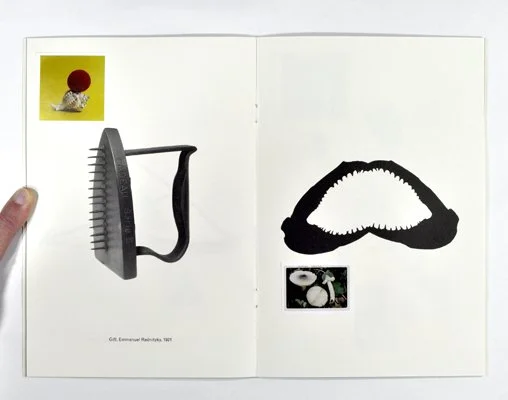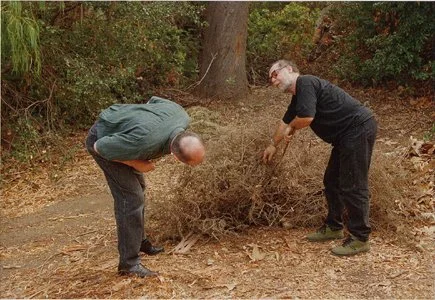
PHOTOGRAPHY IS ALL WE NEED - PHOTOGRAPHY IS NEVER ENOUGH
An essay about the exhibition Surface Tension, curated by Michelle Westmark-Wingard, at Bethel University’s Olson Gallery. Featuring four artists working with photography: Sophia Chai, Paula McCartney, Christine Nguyen and Letha Wilson.

If the Supply of Lambs Hold Out: Simen Johan’s Until the Kingdom Comes
Coinciding with his 2013, exhibition of the same name, Simen Johan released a book of his work, Until the Kingdom Comes. The 12.5x15.5” book contains twenty-eight photographs spread over sixty-four pages. The pages are unbound. Even on a table, this results in a bit of slippage when paging through the book. Photos are often split across a spread and must be regularly realigned. The book is always falling apart, much as many of the environments depicted inside seem to be disassembling. This conceptual hook sets a bit weakly in the face of material realities. The paper is a smooth matte surface of 100% recycled post-consumer waste material. This material sourcing is a counterweight to the environmental desolation that permeates many of the images. The cover photograph Untitled #171, depicts over sixty small Yellow-headed Blackbirds populating, and even nesting in, a burnt black landscape with sludge covered ground – little avian bits of color and life in the face of devastation. The matte surface of the paper dulls the blacks and the depth of the images a bit more than one might hope. Given that the cover of the book bears no distinction from the interior pages, other than being the outermost sheet, it feels redundant to see this image a second time inside. While the material attributes of the book leave some things to be desired, the work itself and the sequenced compilation of it into this loose folio present the viewer with dramatic images containing rich and complex thought.

A Sublime Feeling In My GUT: Eric William Carroll's Theory of Everything
I’m entranced by the images from the Hubble Space Telescope. When I first encountered the photographs several years ago, I didn’t know all that much about how they were made or even exactly what I was looking at – they showed something far away and much bigger than I could really conceive. I’ve read descriptions of the space gases and nebulas captured in the images, but I don’t really understand the science in a meaningful way.

Photoeye Book of the Week: Taryn Simon’s Birds of the West Indies
The recent Bond films have expunged all of the camp and humor from a franchise that previously featured names like Pussy Galore, a weaponized Bowler hat, and a crocodile shaped mini-sub. These, and every other Bond vehicle, weapon, and woman are cataloged in Taryn Simon’s index Birds of the West Indies. The only iconic thing missing is martinis, but those remain the same film after film – shaken not stirred. This index, however, is very much shaken and stirred (by the Mersenne Twister random number generator) to emphasize how interchangeable each of these elements is within the films’ plotlines.

Ghost Show May Be in Session
A glowing light appears, sometimes bobbing up and down or splitting into multiple orbs, in an area of the rural Ozarks ominously known as the Devil’s Promenade. It has done it for generations. Assorted scientists and government agencies have studied them and still know nothing, or at least nothing they will tell us. But, the Spook Lights are less conspiracy theory and more mystery. Laura Shipley and Antone Dolezal’s Spook Light Chronicles approach the subject with just this sensibility.

Objectifying Time
Peter Happel Christian’s exhibition, Sword of the Sun, at Macalester College addresses the materiality of photography literally — his work is as likely to materialize as object as it is in print. Framed contact sheets, a photogram, a few color prints, and a sheet of photographic paper developed with the drag of dripping chemicals, all hang in the gallery among a series of sculptures made from cardboard boxes, mirrors, shards of glass and two tables of meticulously ordered sundry materials. The tables are laid out in such a way that the various articles serve as detailed citations, evidence of mental associations connecting shape and form, documentation of the material resonance between objects, time, nature, and the photographic record itself.

F* That: Photography and the Ineffable
There isn’t really a visual equivalent for ineffable, at least not one that holds the ineffable’s relationship to the transcendent as well as to the inexpressible. One could go with the prosaic, unviewable, or the slightly more mysterious, invisible, to deal with the simple inability to see a thing. But, you would have to join it to something like ulterior to convey a sense of existence past a defined boundary, or occult to reveal its secret nature beyond the range of human knowledge. Still, these are not terms relating to purely vision, and would have to be used as ancillary adjectives. Sublime brushes up against these ideas somewhat, but, like the others, holds its primary meaning and implications in other areas.

Jason Fulford’s The Mushroom Collection
Jason Fulford’s new book The Mushroom Collection is designed to accompany his exhibition at the Minneapolis Institute of Arts. The fifth installment of curator David Little’s New Pictures series, the exhibition begins in the gallery, spreads out into the museum, and is published into the wider world. The exhibition is the latest iteration in Fulford’s Mushroom Collector projects. It combines his own photographs, a short black and white video with a squeaky undulating soundtrack that permeates the exhibition, and the collection of mushroom photographs by an anonymous photographer that initiated Fulford’s project. The mushroom photos are small and scattered throughout the gallery, intermixed with the other photographs and varying heights on the wall – sometimes growing in unexpected places: over the wall text and onto the museum’s signage. Fulford’s photographs in the exhibit are poetic and understated. The collection of images is quite varied in size and format, incorporating contact sheets and photograms. Formal echoes and recurring shapes move the viewer from one visual phrase to the next. It is more sensory than cognitive – about seeing and associating on an intuitive level.

Colleen Mullins’ Elysium: Urban Canopy Loss in Post-Katrina New Orleans at the Hands of Man
When visiting my parents after the destruction caused by Hurricanes Ivan (2004) and Dennis (2005), I was stunned at the transformation of my childhood home. Crews worked to remove wreckage and to replace the debris with new construction. But this was expected. The transience of buildings, especially suburban shopping centers and other recent construction, seems natural. What was truly disorienting was the extent to which the forest landscapes lining highways and abutting neighborhoods had been altered by the storms. It was shocking to see what little remained of hundreds of years worth of natural growth, shredded in a matter of a few short hours. Trees were twisted and torn in unnatural ways, fallen, or just absent. Previously filled space was opened, the tree line thinned. Now, my family’s home is no longer surrounded by thick forest. The yard is all but empty. The few remaining trees seem dislocated by their isolation. This culling of trees has shifted my experience of the space; it no longer feels like the place I grew up. In the absence of the familiar foliage, it is a new place.

100 Artists See God - A Review
This exhibition opened in the spring of 2004 at San Francisco’s Contemporary Jewish Museum. The show is traveling nationally over the next two years, and is also available as a print catalogue. Sponsored by Independent Curators International (ICI), art world veterans John Baldessari and Meg Cranston have assembled a rare confluence of artists dealing with subject matter that is typically shied away from in contemporary galleries. But as the curators point out, the world is profoundly influenced by concepts of God, concepts held by believers and unbelievers alike, and especially in our current political climate.